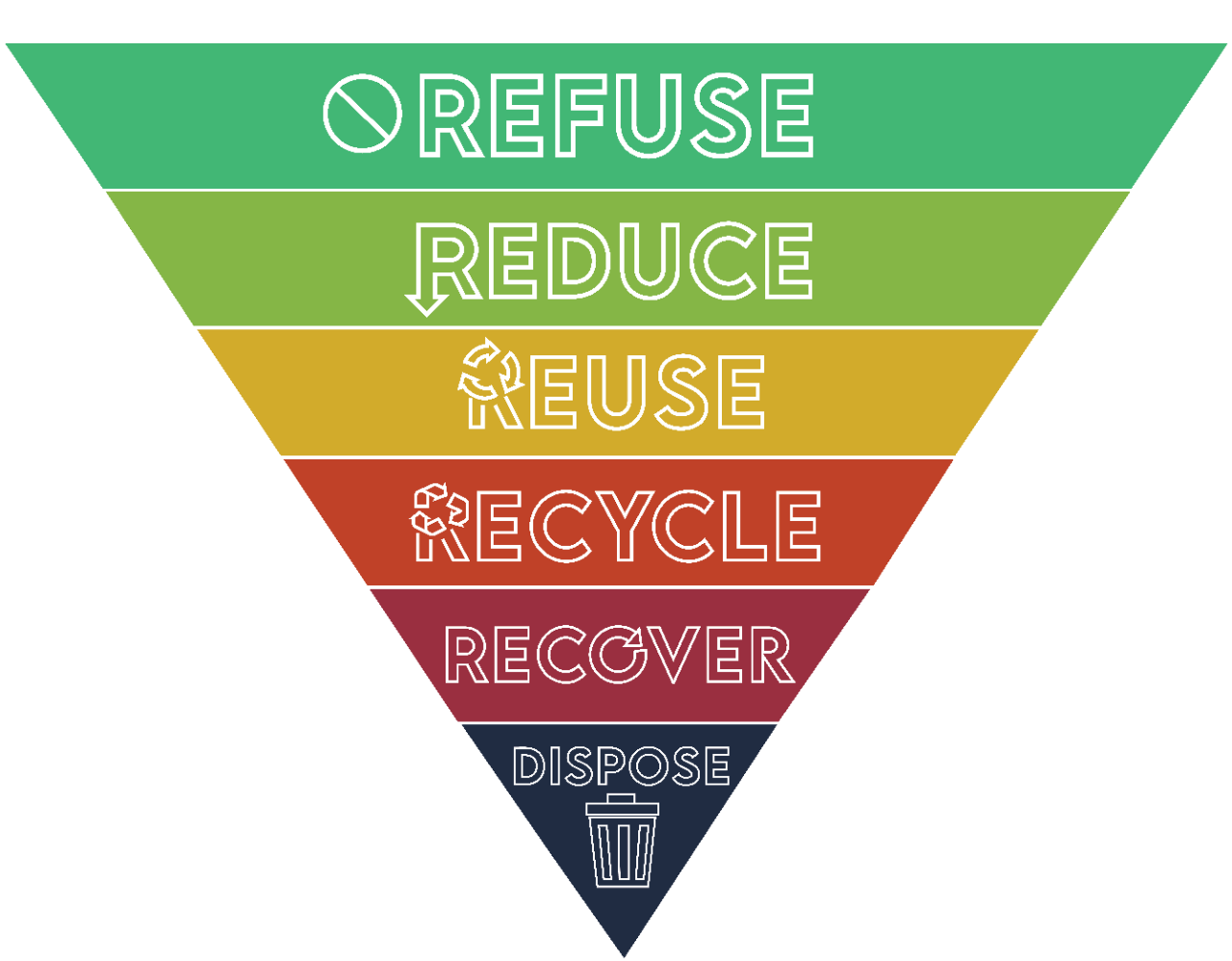VILLANOVA UNIVERSITY ZERO WASTE INITIATIVE
WHY SHOULD I CARE ABOUT ACHIEVING ZERO WASTE AT VILLANOVA?
Villanova University is rooted in its ideals of Veritas, Unitas, Caritas—Truth, Unity, Love—and is committed to pursuing Zero Waste as a way of embodying its Augustinian Catholic identity of caring for one another and the world around us. By utilizing waste reduction strategies in the pursuit of Zero Waste, we—as a community—can provide a more sustainable future. At the core of all sustainability activities is Villanova’s vision of protecting the environment for generations to come.
Progress toward Zero Waste directly impacts Villanova University’s 2020-2030 Sustainability Plan, which aims to integrate the University’s value-centered principles with environmental stewardship. Based on the framework of the United Nations Sustainable Development Goals and guided by our Augustinian Catholic values, the methodology for Villanova’s Sustainability Plan provides clear goals as well as quantifiable targets.
WHY SHOULD I HELP VILLANOVA ACHIEVE ZERO WASTE?
Whether you’re a student, faculty or staff member, or campus visitor, everyone at Villanova plays a role in helping achieve Zero Waste and assisting in progress toward a better future. Individual participation in waste reduction and responsible resource management can make a difference and help initiate necessary change. Not participating can have direct negative impacts to air, land and water—impacting our community and our planet.
WHAT HAPPENS IF WE DON’T CONTRIBUTE TO ZERO WASTE EFFORTS?
Additional resources are needed to create packaging and transport goods, resulting in more fuel consumption, labor, loss of time, and sometimes even higher item costs. In addition, more waste is generated, resulting in a need to safely dispose of the waste. If the wasted materials can’t be recycled or are not recycled properly, the impacts on our environment become greater when an item must be landfilled or incinerated
WHAT SIMPLE THINGS I CAN DO TO HELP VILLANOVA’S ZERO WASTE INITIATIVE?
Consider evaluating potential purchases by answering the question: “Is this necessary or are there better options?” Asking this simple question can help eliminate waste before it’s generated.
Three things everyone could do to support Villanova’s Zero Waste Initiative:
Put Waste in its Place: If you’re not sure where to place your waste, please refer to Villanova’s recycling search engine for information on how to best dispose of materials or donate items that are no longer needed.
Get Involved: Everyone has an opportunity to participate! Whether it’s making conscious decisions to improve your own consumption and disposal habits, sharing and/or helping educate others about what you’ve done to reduce waste, or volunteering to take part in Zero Waste outreach, community members are encouraged and empowered to be a part of the solution.
Refuse, Reduce, Reuse, Repair and Recycle: The 5 “R’s” of zero waste—Refuse, Reduce, Reuse,Repair and Recycle—represent the most common waste management methods that qualify toward achieving Zero Waste.
The Waste Pyramid

The Waste Pyramid is a step-by-step guide to reducing waste that goes to a landfill. It is designed to be followed in order, to help minimize waste production.
- Refuse: Just say no and refuse any item you don't need
- Examples include: removing yourself from printed publications you do not read, or requesting no plastic utensils when eating out
- Reduce: Use less and reduce your waste
- Examples include: Buying a larger container instead of two smaller ones, or bringing your own bags when grocery shopping
- Reuse: Give items a second life
- Examples include: Buying your clothes from a thrift store instead of a mall, or cleaning the food residue out of your jars and reusing them for another purpose
- Recycle: Items are changed from their original form to make something new
- Make sure to follow your local municipality's guidelines to reduce contamination
- Recover: Otherwise keep items out of landfills
- Examples include: composting food waste, or cleanly burning waste
- Dispose: The last step - send your waste to the landfill
- Use this step as a last resort when none of the previous steps are an option
WHAT ELSE CAN I DO TO HELP CONTRIBUTE TO VILLANOVA’S ZERO WASTE INITIATIVE?
Reuse is better than recycling: It takes less energy and labor to reuse an item than it does to recycle an item and turn it into something new. While reusable items may cost more upfront and not seem as convenient as their single-use counterparts, they usually cost less throughout their lifetime because they can be reused repeatedly, resulting in less of a need to keep buying similar single-use items.
Choose to print double-sided: Excessive printing or printing documents in a single-sided format contributes to paper waste and consumes more natural resources to make additional paper. Additionally, buying paper products made from post-consumer materials supports recycling programs by supplying a market and value for these materials, which helps make recycling cost less.
Dispose of waste in proper waste bins: Throwing waste in the wrong container can result in waste being landfilled or incinerated as opposed to being recycled or composted.
Don’t overfill waste or recycling bins: If there is too much trash in a recycling bin or dumpster, it could result in all contents being landfilled or incinerated due to the effort and time needed to sort the recyclable items from the trash.
Avoid Wishcycling: Wishcycling means throwing items in a recycling bin in the hope that they will be recycled—even if we’re not sure if that item is recyclable.
Utilize green purchasing practices: Purchasing durable items (not single-use or disposable), items sourced from post-consumer recycled content, and reusable items instead of single-use items are great examples of green purchasing strategies.
Villanova is proud to offer many disposal options in support of Zero Waste and is continually expanding program options. Through surplus reuse programs, donation, recycling, food recovery, composting and other disposal methods, the University continually strives to improve infrastructure and access to Zero Waste methods of waste disposal instead of contributing to landfills or waste incineration.
